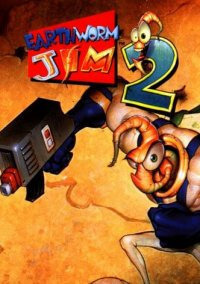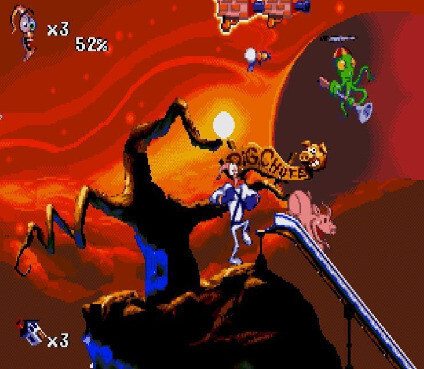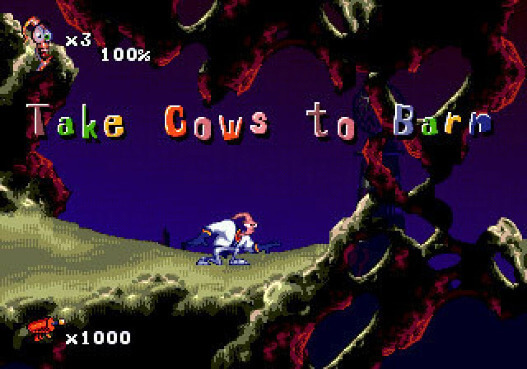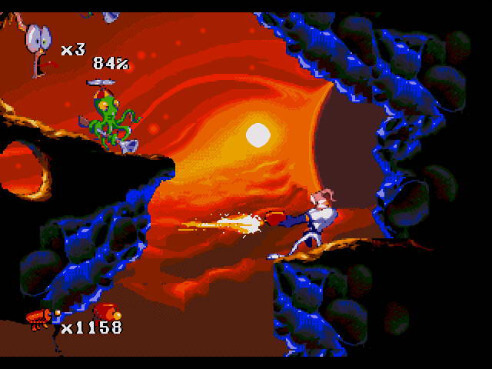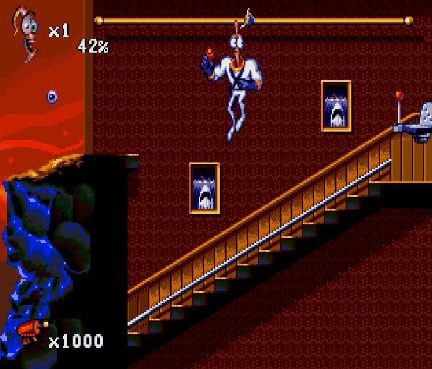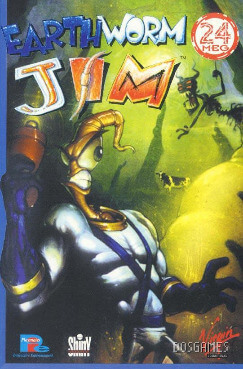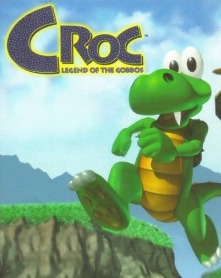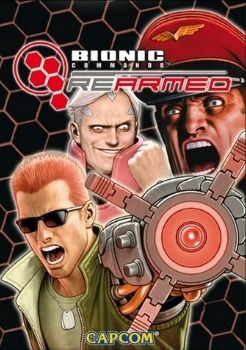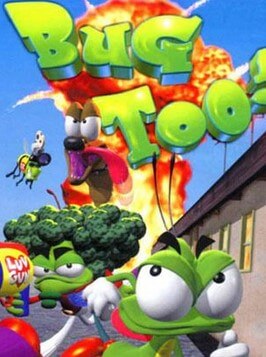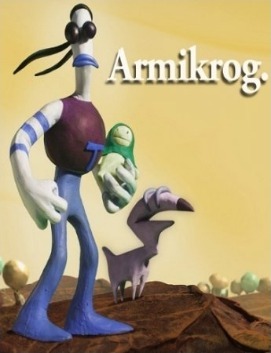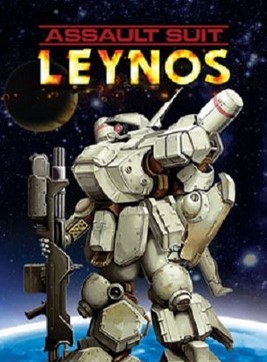Earthworm Jim 2 is a run and gun platform video game starring an earthworm named Jim in a robotic suit who battles evil. It is a sequel to the original Earthworm Jim, and the second and final game in the Earthworm Jim series developed by original creators Doug TenNapel, David Perry, and Shiny Entertainment. It was released in late 1995 and early 1996 depending on region and video game console, initially being released for the Sega Genesis and Super Nintendo, before being ported to other consoles.
Gameplay
The purpose of the game is largely the same as it was in the original Earthworm Jim; traverse through the levels in order to save Princess What's Her Name, and defeat the game's numerous enemies, namely Psy-Crow. However, gameplay is much more diverse than in the first Earthworm Jim.
While the majority of levels are still based on run and gun and platformer game elements, separate levels incorporate different gameplay elements as well. Some levels, such as the opening level, "Anything But Tangerines", and the game's eighth level, "Level Ate", play largely the same as the original Earthworm Jim, with the exception of there being a larger variety of moves at the players disposal. For instance, there are more types of guns to use once found in a level, such as an auto-aiming gun, or the "Barn Blaster" gun which takes out every enemy visible on the screen. Additionally, Jim's friend "Snot" travels with him, and can be used to stick and swing to other slimy green surfaces, or as a parachute, upon jumping.
Other levels stray much farther from this formula. In the third level, "The Villi People," the player must guide Jim, defenseless in the disguise of a blind cave salamander, through intestinal passages, while avoiding exploding sheep and hazards embedded in the floor and walls. The latter part of the level suddenly switches to a game show/trivia format, where the player has to answer nonsensical multiple choice questions that commonly have no logically correct answer. Another level, aptly titled "Inflated Head", has Jim's head inflated much like a balloon, and the player must control Jim as he floats upward, avoiding touching sharp objects which cause him to fall back down to the start of the level, all the while dodging Flagitious's attack.
Yet another, "The Flying King", plays as an isometric shooter, with Jim again on his "pocket rocket", where a balloon with a bomb must be directed to the end of the level, and defended from enemies, in order to defeat Major Mucus. The last level of the game is not a typical boss fight, but rather, a race against Psy-Crow through an obstacle course, to get to Princess What's Her Name. The game ends with Jim saving the Princess, but all three characters eventually turning randomly into cows.
Two bosses are exclusive to this game, Pedro Pupa, a unicycle riding pupa, and Flaming Yawn, a fire breathing steak.
Versions and releases
The game, much like the first, was developed for the Genesis and then ported over to the Super NES. They were released virtually simultaneously and were largely the same game, the only differences being that the Super NES version had alternate background art., and the ability to switch weapons. The Genesis version was released in Japan exclusively via the Sega Channel service. Rainbow Arts ported the game to MS-DOS along with the first game, in a package titled "Earthworm Jim 1 & 2: The Whole Can 'O Worms". This port featured an upgraded CD-DA music soundtrack, more voice clips and redrawn graphics, but lacked the "Lorenzen's Soil" level. Versions for the original PlayStation and Sega Saturn (both developed by a separate studio, Screaming Pink, Inc.) were also released, which contained the upgraded audio and all of the levels from the original. Both of these versions were identical, and contained background art and graphical differences separate from any other versions of the game. On a 1994 conference held on CompuServe with Shiny Entertainment prior to its release, David Perry stated that they were considering in making a version of the game for the Atari Jaguar, which never came to fruition.
Many years later, it was ported to a newer generation of systems. A Game Boy Advance port, based off the Super NES release, was released in 2002. It has been widely criticized for poor graphics, bad sound and music, and very glitchy gameplay. The Sega Genesis version was later released for download on the Wii via the Virtual Console in 2009 as well. The MS-DOS version was re-released through DOSbox emulation on GOG.com and Steam.
Reception
Reception for the game was very positive. Sources such as IGN and GameZone declared it as better overall than the original, which was also very well received. Destructoid praised the game's humor, innovative gameplay, and "mini-game" style levels spread throughout the game were also held in high regard as a welcome change from the linear gameplay common at the time. Reviewing the Genesis version, one reviewer for Electronic Gaming Monthly disapproved of the game, remarking "where the first had technique, this one just gets cheap", but the remaining three declared it a worthy sequel. They commented that it retains the same great gameplay of the original while adding excellent new weapons and levels "which are even crazier than before". Reviewers for GamePro gave rave reviews for both the Genesis and Super NES versions. They noted that the basic gameplay and premise are unchanged from the first game, but highly praised the new level designs, diverse soundtrack, and improved animations for the title character, with one of the reviewers concluding that "Earthworm Jim 2 manages to exceed the lofty standards of the first game." A reviewer for Next Generation likewise felt that the inventive new level designs were more than enough to make the game feel fresh in spite of its using the same gameplay. He summarized that "For the most part, this long-awaited sequel has answered the success of the first installment using more of the same humor, action, and skill, adding a few surprises this time around." Sega Saturn Magazine (previously Sega Magazine) gave the Genesis version a 94%, citing the variety of gameplay styles with "every one, in every way, sickeningly well implemented."
